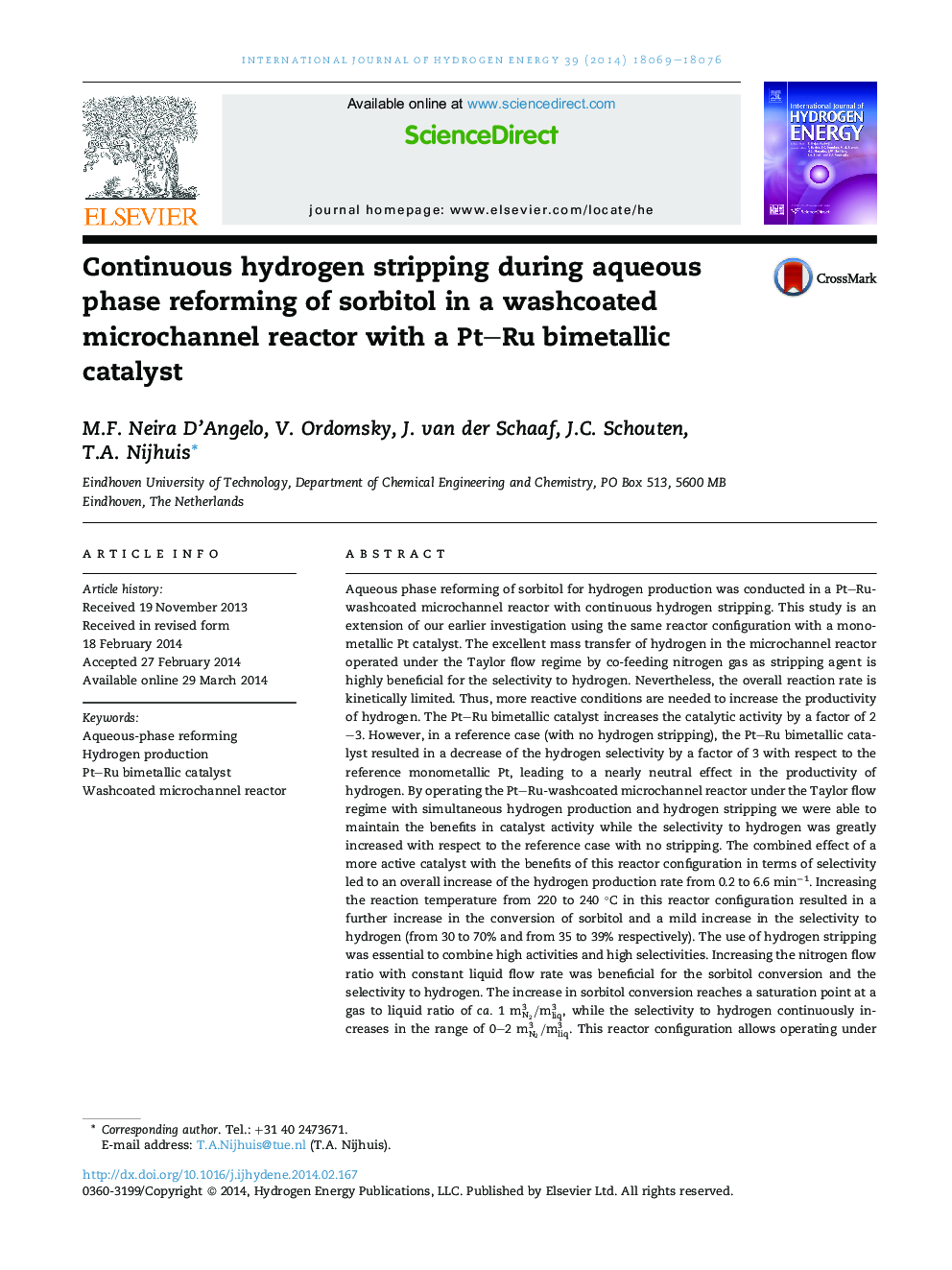| Article ID | Journal | Published Year | Pages | File Type |
|---|---|---|---|---|
| 1271903 | International Journal of Hydrogen Energy | 2014 | 8 Pages |
•Addition of Ru to Pt increases the activity, but reduces the selectivity to H2.•APR in a microreactor with H2 stripping benefits the hydrogen selectivity.•Fast and selective production of H2 can be done in a Pt–Ru washcoated microreactor.•The microreactor can operate under reactive conditions with high H2 selectivity.
Aqueous phase reforming of sorbitol for hydrogen production was conducted in a Pt–Ru-washcoated microchannel reactor with continuous hydrogen stripping. This study is an extension of our earlier investigation using the same reactor configuration with a monometallic Pt catalyst. The excellent mass transfer of hydrogen in the microchannel reactor operated under the Taylor flow regime by co-feeding nitrogen gas as stripping agent is highly beneficial for the selectivity to hydrogen. Nevertheless, the overall reaction rate is kinetically limited. Thus, more reactive conditions are needed to increase the productivity of hydrogen. The Pt–Ru bimetallic catalyst increases the catalytic activity by a factor of 2–3. However, in a reference case (with no hydrogen stripping), the Pt–Ru bimetallic catalyst resulted in a decrease of the hydrogen selectivity by a factor of 3 with respect to the reference monometallic Pt, leading to a nearly neutral effect in the productivity of hydrogen. By operating the Pt–Ru-washcoated microchannel reactor under the Taylor flow regime with simultaneous hydrogen production and hydrogen stripping we were able to maintain the benefits in catalyst activity while the selectivity to hydrogen was greatly increased with respect to the reference case with no stripping. The combined effect of a more active catalyst with the benefits of this reactor configuration in terms of selectivity led to an overall increase of the hydrogen production rate from 0.2 to 6.6 min−1. Increasing the reaction temperature from 220 to 240 °C in this reactor configuration resulted in a further increase in the conversion of sorbitol and a mild increase in the selectivity to hydrogen (from 30 to 70% and from 35 to 39% respectively). The use of hydrogen stripping was essential to combine high activities and high selectivities. Increasing the nitrogen flow ratio with constant liquid flow rate was beneficial for the sorbitol conversion and the selectivity to hydrogen. The increase in sorbitol conversion reaches a saturation point at a gas to liquid ratio of ca. 1 mN23/mliq3, while the selectivity to hydrogen continuously increases in the range of 0–2 mN23/mliq3. This reactor configuration allows operating under more reactive conditions (i.e. more reactive catalyst and higher reaction temperatures) without significant loss in hydrogen selectivity.
Graphical abstractFigure optionsDownload full-size imageDownload as PowerPoint slide
